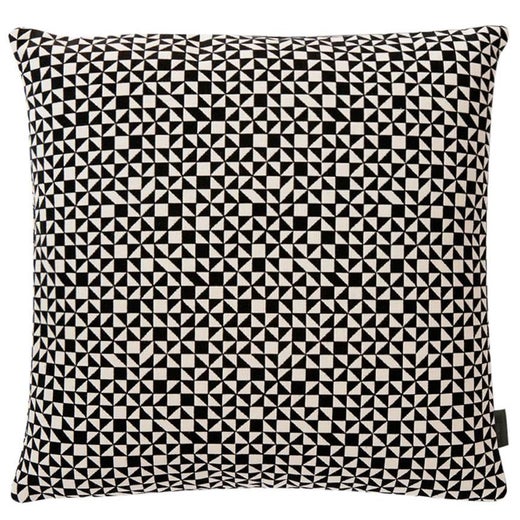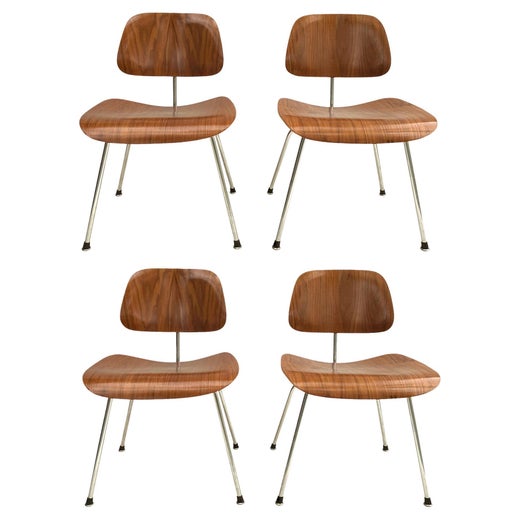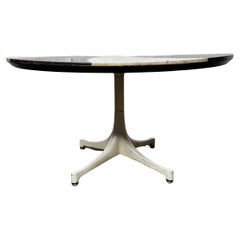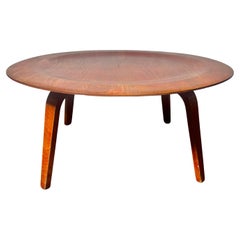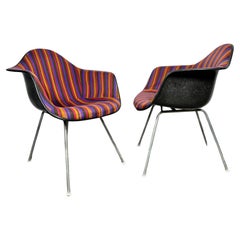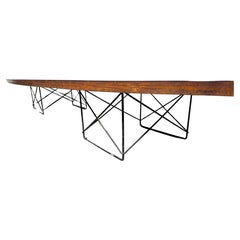Coffee Table by Alexander Girard & Charles Eames for La Fonda NYC, 1960
About the Item
- Creator:
- Dimensions:Height: 17.5 in (44.45 cm)Diameter: 30 in (76.2 cm)
- Style:Mid-Century Modern (Of the Period)
- Materials and Techniques:
- Place of Origin:
- Period:
- Date of Manufacture:1960
- Condition:Wear consistent with age and use. Minor pitting to chrome base.
- Seller Location:Buffalo, NY
- Reference Number:1stDibs: LU1062412339491
Alexander Girard
The director of design for the textiles department at Herman Miller, Inc., from 1952 to 1973, mid-century modern visionary Alexander Girard introduced bright, bouncy colors to upholstery and drapery fabrics, created jaunty graphics for marketing and advertising materials and devised motifs for everything from textiles to ceramics based on his true love: folk art from cultures around the globe.
The son of an American mother and an Italian father, Girard (known as Sandro to his friends) was born in New York City in 1907 but raised in Florence. He came from a creative family — his father was a master woodworker — and Girard began drawing and making his own playthings as a youngster. He had a fascination for nativity crèche tableaux, an enthusiasm that likely was the germ for his later interest in folk art. He went on to earn degrees in architecture at schools in both Rome and London before returning to New York in the 1930s and working in interior design.
By the 1940s, he and his wife, Susan, had moved to Detroit, where Girard was head of design for Detrola, a firm specializing in tabletop radios. The elegant bentwood housings that he developed for the devices won him acclaim, but, more importantly, at Detrola he met Charles Eames. The two became lifelong friends, and it was Eames who drew Girard toward Herman Miller, which had no dedicated textile department until Girard arrived, and most of its furniture was upholstered in mundane, “safe” hues. Girard changed all that, introducing fabrics in vivid shades of red, orange, yellow and blue. His early designs incorporated geometric motifs — stripes, circles, square, triangles and such. But toward the end of the 1950s he began to introduce folk art themes into his designs.
Girard did not collect important or expensive folk pieces. Rather he was drawn to simple objects such as handmade toys, figurines and models of animals, buildings and plants. The fabrics that emerged had whimsical, lighthearted motifs depicting, for example, angels, children, birds and flowers. Toward the end of his term with Herman Miller, in an effort to achieve what he termed “aesthetic functionalism,” Girard produced a group of what he called “Environmental Enrichment” pieces — silk-screened cotton panels emblazoned with various graphic designs, from bold geometric patterns to folk art themes. They were meant to divide spaces in offices or the home in lieu of walls while simultaneously functioning as art. Today, panels of vintage Girard upholstery textiles have become premium collectibles. The designer's furniture is less well known, primarily because most of it was created for private commissions.
Girard’s most lasting contribution may be his folk art collection. He and Susan had begun gathering pieces shortly after their marriage, in 1936. By the 1970s, they had amassed the world’s largest collection of cross-cultural folk art, composed of more than 100,000 pieces from around the world. The Girards donated their holdings to the Museum of International Folk Art, in Santa Fe (where they had moved in the ’60s), quintupling the institution’s collection, and a new wing — named for the Girards — had to be built to hold it.
Find a striking range of vintage Alexander Girard seating, tables, textiles and other furnishings on 1stDibs.
Charles Eames
The legacy of Charles Eames looms large in design. In partnership with his wife, Ray, Charles was at the forefront of pioneering innovation in the use of molded plywood for furniture making. The Eameses’ cheerful and inviting work has endured among the most important advancements in the history of 20th-century design.
Together, visionary mid-century modern duo Charles and Ray Eames introduced a wide range of renowned furniture to the postwar market, including iconic designs such as the Eames lounge chair and ottoman, the wildly colorful birch plywood-and-plastic-laminate Eames storage unit, the Eames compact sofa and more. The designers were trailblazers in molded plywood furniture and brought lively organic form to metal and plastic.
Charles Eames studied architecture at Washington University in St. Louis. He traveled to Mexico and Europe, and experienced firsthand the work of designer-architects Le Corbusier and Ludwig Mies van der Rohe. In 1930, upon returning to Missouri, Eames opened an architecture practice with Charles M. Gray but later moved to Michigan in 1938. He received a fellowship at Cranbrook Academy of Art, which would become a breeding ground for the stars of mid-century design. Eames continued his architecture studies at Cranbrook and also taught in the design department.
In 1940, Eames met his future wife, artist and designer Beatrice Alexandra "Ray" Kaiser, who was studying at Cranbrook under Abstract Expressionist painter Hans Hofmann. Charles teamed up with another Cranbrook instructor, Finnish-American designer Eero Saarinen, to explore the possibilities of plywood for use in furniture design.
With support from Ray, Charles and Eero created chairs and case pieces and submitted them to the “Organic Design in Home Furnishings” competition at the Museum of Modern Art in New York City — among them was the groundbreaking organic Side chair made of molded plywood with maple legs. It was upholstered by Heywood-Wakefield. This exhibition is considered critical by many to the popularization of what is known as mid-century modernism. Eames and Saarinen won first place for their submissions to the competition.
Charles and Ray were married in 1941 and soon after moved to Los Angeles, California, and lived in an apartment building designed by architect Richard Neutra. Charles worked on set design at MGM, and at night, in a humble workshop they established in the guest bedroom, he and Ray experimented with molded plywood on a homemade device they called the “Kazaam!” machine. In 1942, the couple won a U.S. Navy contract to create molded plywood leg splints that would be used to support wartime medical efforts. Soon, the Evans Product Company was making the splints and the Eameses opened the famed Eames Office and studio.
The Eameses’ innovative use of wire framing, molded plywood and applied fabrics caught the attention of many notable figures in interior design and architecture, including George Nelson, director of design at Herman Miller, a now-legendary modern furniture manufacturer. The company enlisted the Eameses’ talents and was eventually home to the couple’s classic pieces such as the Eames DCW chair and the DCM chair.
Find an extensive array of vintage Charles Eames seating, tables and case pieces on 1stDibs.
You May Also Like
Vintage 1960s American Mid-Century Modern Coffee and Cocktail Tables
Vintage 1960s American Mid-Century Modern Coffee and Cocktail Tables
Slate, Chrome
Vintage 1960s American Modern Coffee and Cocktail Tables
Aluminum
Vintage 1960s American Modern Coffee and Cocktail Tables
Aluminum
Vintage 1960s American Modern Coffee and Cocktail Tables
Aluminum
Mid-20th Century American Mid-Century Modern Coffee and Cocktail Tables
Marble, Aluminum
Vintage 1960s American Mid-Century Modern Coffee and Cocktail Tables
Aluminum
Vintage 1970s American Mid-Century Modern Coffee and Cocktail Tables
Travertine, Chrome
Vintage 1970s American Modern Coffee and Cocktail Tables
Aluminum, Chrome
Vintage 1970s American Mid-Century Modern End Tables
Marble, Chrome
More From This Seller
View AllVintage 1950s American Mid-Century Modern Coffee and Cocktail Tables
Marble, Aluminum
Vintage 1950s American Mid-Century Modern Coffee and Cocktail Tables
Plywood
Vintage 1970s American Mid-Century Modern Armchairs
Metal
Vintage 1950s American Mid-Century Modern Coffee and Cocktail Tables
Metal
Vintage 1940s American Mid-Century Modern Coffee and Cocktail Tables
Birch, Plywood
Vintage 1950s American Mid-Century Modern Lounge Chairs
Metal
Recently Viewed
View AllRead More
The 21 Most Popular Mid-Century Modern Chairs
You know the designs, now get the stories about how they came to be.
A Guide to Herman Miller’s Most Iconic Furniture
The prolific manufacturer has partnered with many of the world’s top designers since opening its doors in 1923. Here are some of the company’s greatest hits, which helped transform the American home and office.
